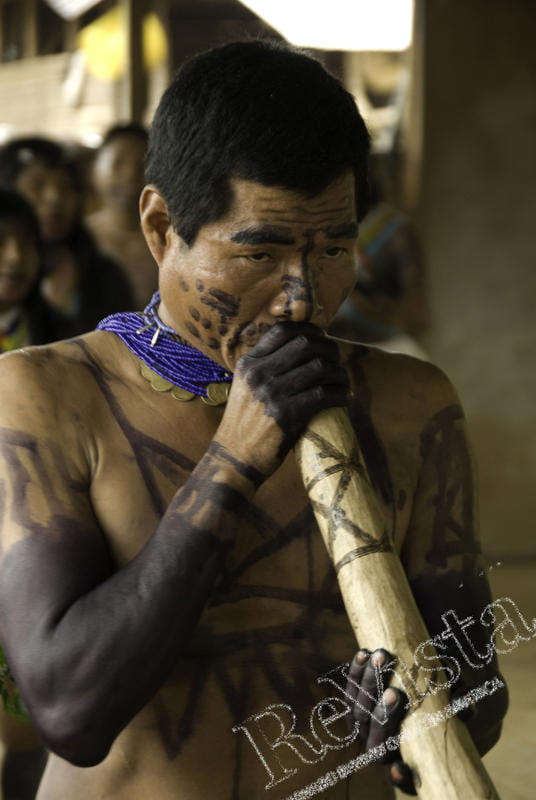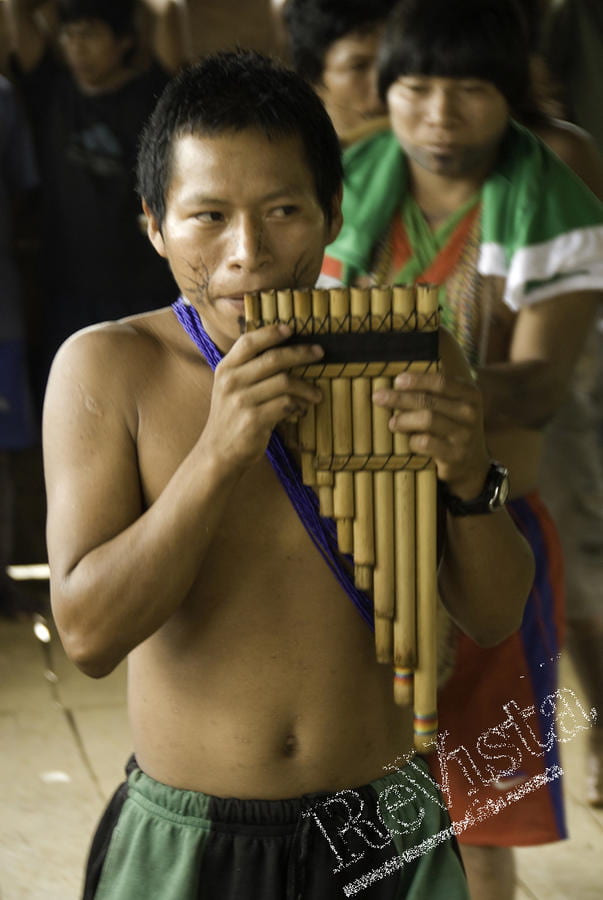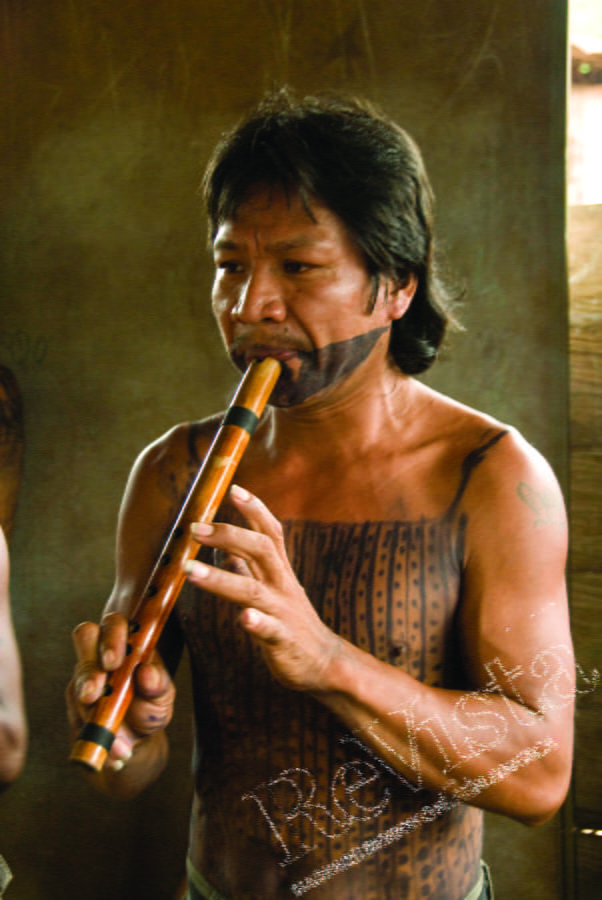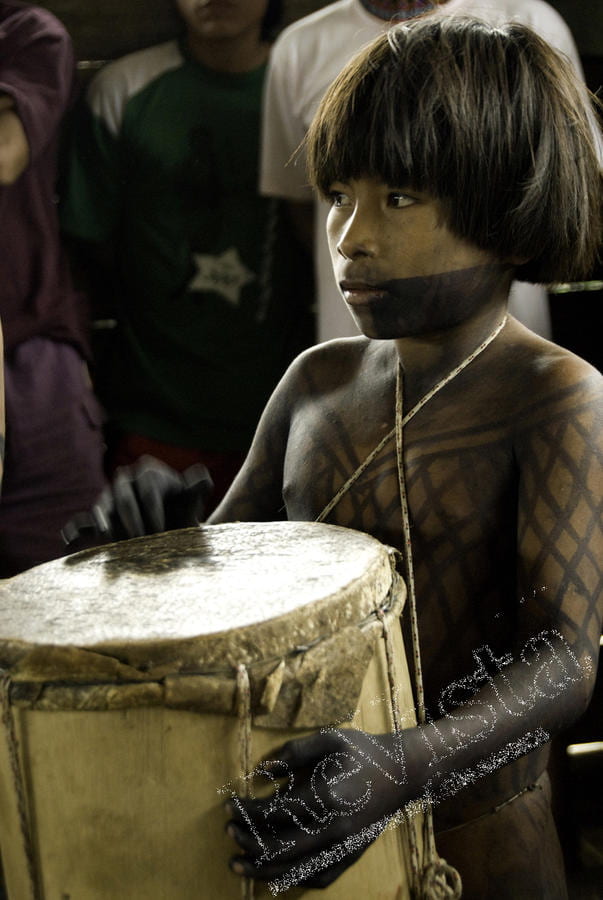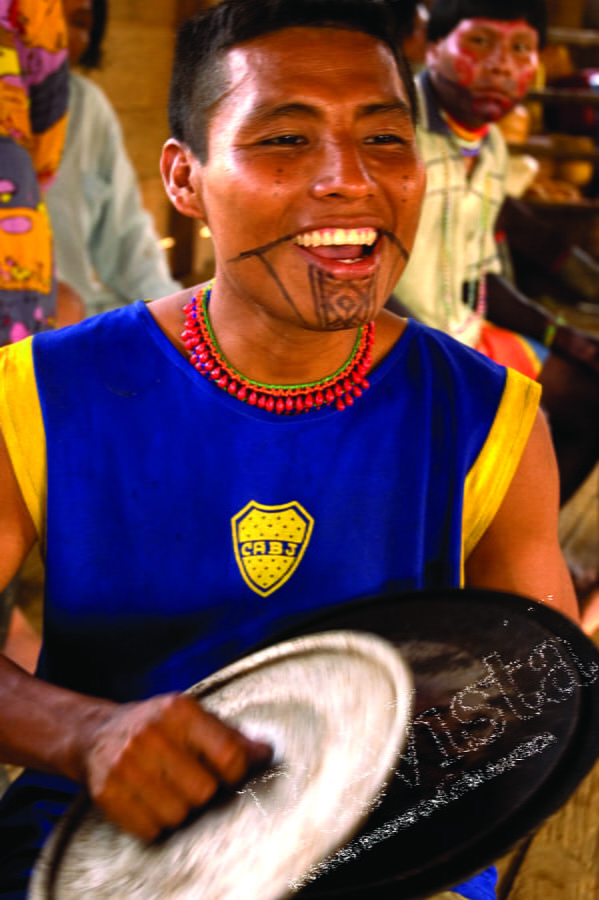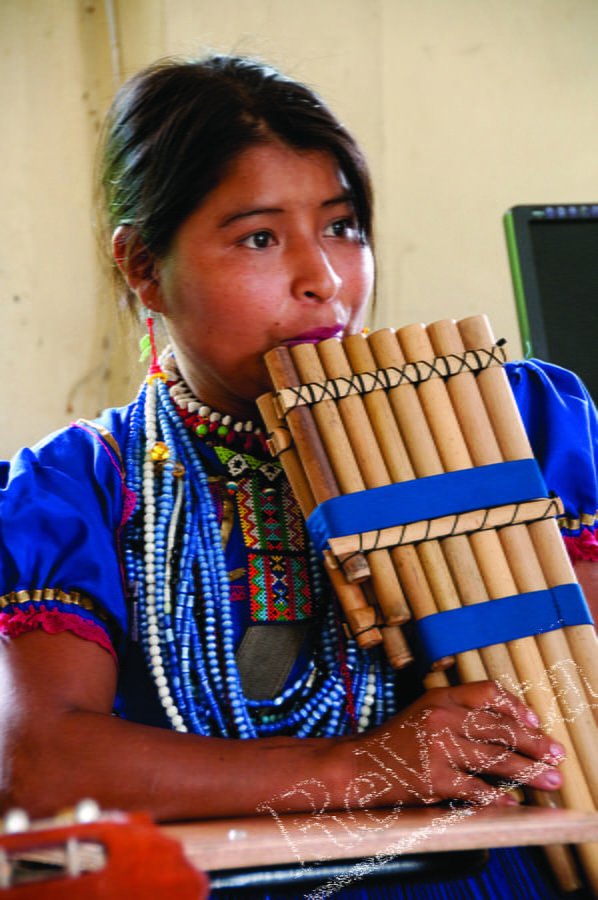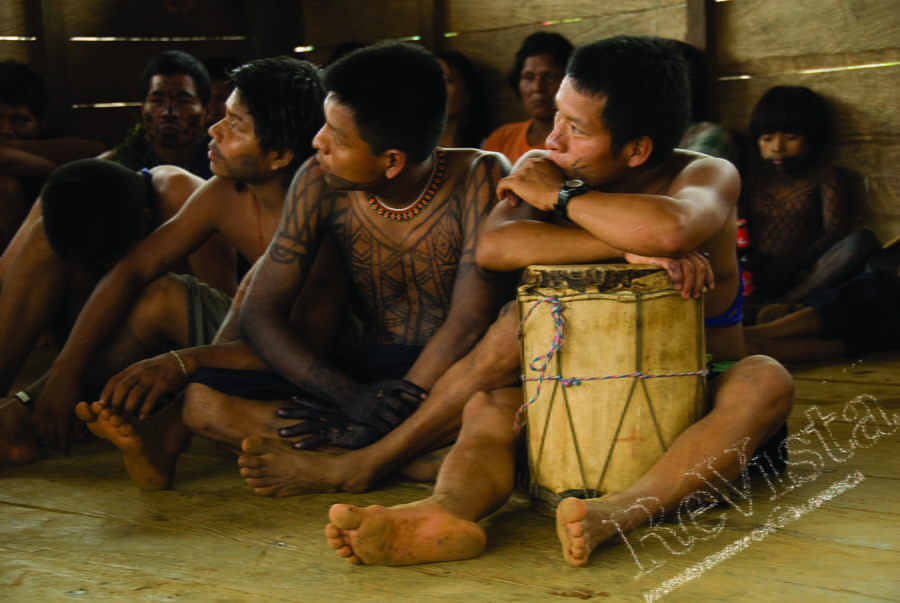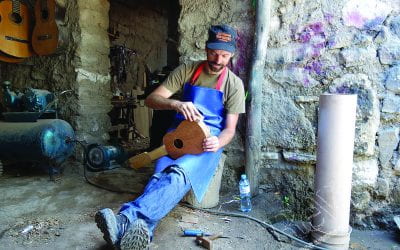Embera Music
The Embera of western Colombia, one of the largest indigenous groups in the country, have been victims of violence and displacement by the Spanish conquistadors, abandonment or outright hostility by modern national governments, destruction and displacement by the armed groups in Colombia’s civil conflicts, and attempts to suppress their culture by Catholic missionaries up to the late 20th century. In recent years, community leaders have been concerned about the way young people have been torn between maintaining their traditional cultural identity and adopting elements of western society—both the attractive elements of medicine, education and communication tools, and the destructive allure of consumer culture—a conflict that has produced tragic outcomes within the communities.
Some have responded by developing a unified movement to reclaim cultural activities—music, song, dance, storytelling, community festivities and rituals—that can serve as a foundation to maintain and strengthen an identity that can allow younger people to navigate these treacherous social waters. The Embera are divided into three ethnic groups who speak distinct dialects of their language, Embera-padea, and these cultural activities also help connect the groups.
Supported by the efforts of people from within and outside the community, young people—especially, but not exclusively, men—are taking up traditional musical instruments and forms, as well as adapting western instruments and technology to those forms. The revival of dance and song primarily engages girls and women. This movement has included reviving techniques for making traditional wind and percussion instruments.
The Catholic Diocese of Quibdó and cultural entities of the Department of Antioquia have helped support this work by releasing CDs—although with quite small runs and now very difficult to find.
Young people are also learning to play western instruments, which allows them to play some of the popular music genres attractive to people in the communities. Much of this teaching is being done by an Embera musician respected for his ability to instruct the young people in several instruments and to help them learn to play in bands.
In this photo essay, I have concentrated on performances and other manifestations of the revival of traditional music that I have had the privilege of witnessing at cultural events and community meetings and workshops—though I must admit it’s impossible to avoid guitars, especially when played by one of the few girls in the workshops.
Winter 2016, Volume XV, Number 2
Steve Cagan is an independent documentary photographer who has lately focused on environmental issues and grassroots daily life on the Pacific Coast of Colombia.
He can be reached at steve@stevecagan.com
Related Articles
Beyond Bolaño: The Global Latin American Novel
I often wonder what life would have held for the late Chilean writer Roberto Bolaño if he had not passed away due to liver complications more than a decade ago. This year he would have…
Notes on Mexican Rock
English + Español
Since the 1960s, there’s been a booming underground rock scene in Mexico. It defines itself as countercultural, but not in absolute opposition to the mainstream—although sometimes it…
Nature’s Sonorous Politics
English + Español
There’s no indigenous political movement in Andean Peru. This, at least, has been the consensus view of scholars since the 1990s, when protests organized by indigenous parties shook the…

